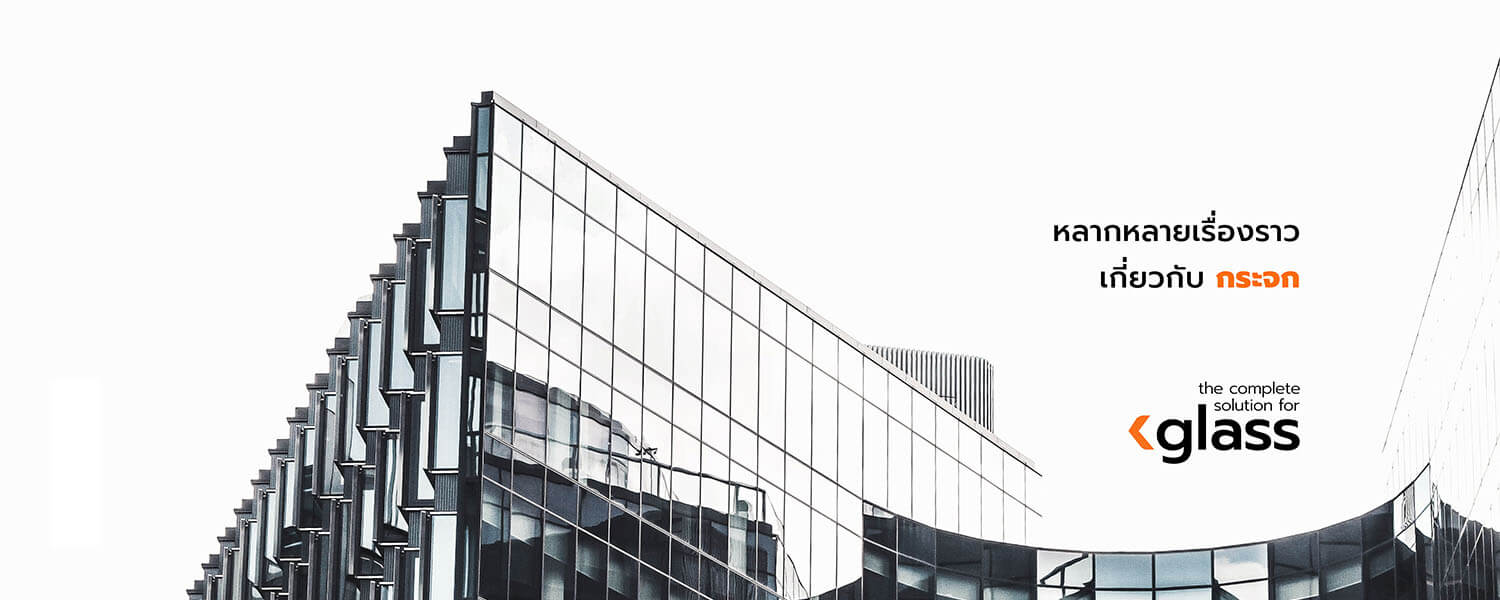เว็บไซต์นี้มีการใช้งานคุกกี้ เพื่อเพิ่มประสิทธิภาพและประสบการณ์ที่ดีในการใช้งานเว็บไซต์ นโยบายความเป็นส่วนตัวและคุกกี้
บริษัท ทีวายเค กลาส จำกัด ซึ่งต่อไปนี้จะเรียกว่า “บริษัท” ตระหนักถึงความสำคัญในการคุ้มครองข้อมูลส่วนบุคคลที่ท่านได้มอบ หรือ จะได้มอบไว้ให้แก่บริษัท ดังนั้น บริษัทจึงได้จัดทำนโยบายการคุ้มครองข้อมูลส่วนบุคคลนี้ เพื่อแจ้งให้ท่านได้ทราบและเข้าใจถึงวิธีการปฏิบัติของบริษัทเกี่ยวกับการเก็บ รวบรวม ใช้ เปิดเผย ข้อมูลส่วนบุคคลของท่าน ตามพระราชบัญญัติคุ้มครองข้อมูลส่วนบุคคล พ.ศ. 2562
นโยบายฉบับนี้ ครอบคลุมข้อมูลส่วนบุคคลที่บริษัทได้รับ หรือเก็บรวบรวมจากการที่ท่านเข้าเยี่ยมชม ซื้อสินค้าและบริการ สมัครสมาชิก ให้คำแนะนำ ติชม ร้องเรียน การทำแบบสำรวจ แบบสอบถาม หรือทำกิจกรรมอื่นใดเท่าที่จำเป็นผ่านทางเว็บไซต์ของบริษัท แอพพลิเคชั่นบนโทรศัพท์มือถือ ช่องทางสื่อสังคมออนไลน์ และตัวแทนจำหน่ายของบริษัท ทั้งนี้ จะไม่ครอบคลุมถึงการใช้งานของท่านบนเว็ปไซต์ แอพพลิเคชั่นบนโทรศัพท์มือถือ ช่องทางสื่อสังคมออนไลน์ ของบุคคลที่สามที่สามารถเชื่อมโยงมายังเว็ปไซต์ แอพพลิเคชั่นบนโทรศัพท์มือถือ ช่องทางสื่อสังคมออนไลน์ของบริษัท และไม่ครอบคลุมถึงร้านค้าที่ไม่ได้อยู่ภายใต้การดูแลของบริษัท ดังนั้น บริษัทจึงขอแนะนำให้ท่านได้โปรดอ่านนโยบายคุ้มครองข้อมูลส่วนบุคคลนี้ เพื่อรับทราบและทำความเข้าใจวิธีการ แนวทาง และวัตถุประสงค์ที่บริษัทได้เก็บรวบรวม ใช้และเปิดเผยข้อมูลส่วนบุคคลของท่าน
(1) “บริษัท” หมายถึง บริษัท ทีวายเค กลาส จำกัด
(2) “ข้อมูลส่วนบุคคล” หมายถึง ข้อมูลเกี่ยวกับบุคคล ซึ่งทำให้สามารถระบุตัวตนของท่าน หรืออาจจะระบุตัวตนของท่านได้ ไม่ว่าทางตรงหรือทางอ้อม แต่ไม่รวมถึงข้อมูลของผู้ถึงแก่กรรม
(3) “เจ้าของข้อมูลส่วนบุคคล” หมายถึง บุคคลซึ่งเป็นเจ้าของข้อมูลส่วนบุคคล ในที่นี้ให้หมายถึง “ท่าน”
(4) “บุคคล” หมายถึง บุคคลธรรมดา ไม่รวมถึงนิติบุคคลที่จัดตั้งขึ้นตามกฎหมาย เช่น บริษัท, สมาคม, มูลนิธิ หรือองค์กรอื่นใด
(5) “เว็บไซต์ของบริษัท” หมายถึง เว็บไซต์ https://www.tykglass.com/
(6) “ตัวแทนจำหน่ายของบริษัท” หมายถึง ตัวแทนจำหน่ายที่อยู่ภายใต้การดูแลของ บริษัท
ในขณะที่ท่านติดต่อบริษัทผ่านช่องทางการสื่อสารใดๆ ของบริษัท หรือตัวแทนของบริษัท บริษัทอาจมีความจำเป็นต้องเก็บรวบรวมข้อมูลส่วนบุคคลของท่าน ดังต่อไปนี้
(1) ข้อมูลส่วนตัว ได้แก่ คำนำหน้าชื่อ, ชื่อ-นามสกุล, เพศ, วันเดือนปีเกิด, อายุ, หมายเลขบัตรประชาชน, หมายเลขหนังสือเดินทาง, เลขประจำตัวผู้เสียภาษีอากร, สัญชาติ เป็นต้น
(2) ข้อมูลเพื่อการติดต่อ ได้แก่ หมายเลขโทรศัพท์, ที่อยู่ทางไปรษณีย์เพื่อจัดส่งสินค้า, ที่อยู่สำหรับระบุในใบเสร็จรับเงิน, ที่อยู่ทางไปรษณีย์อิเล็กทรอนิกส์ (e-mail address), บัญชีผู้ใช้ในเว็บไซต์โซเชียล เป็นต้น
(3) ข้อมูลทางการเงิน ได้แก่ ช่องทางชำระเงิน ข้อมูลบัตรเดบิต/บัตรเครดิต
(4) ข้อมูลการทำธุรกรรมการซื้อขายสินค้าและบริการ ได้แก่ ข้อมูลเกี่ยวกับการรับชำระเงินจากท่าน/คืนเงินไป ยังท่าน, วันที่ชำระเงิน, เวลาชำระเงิน, ยอดชำระเงิน, หมายเลขการซื้อหรือคำสั่งซื้อ, วัน/เวลาในการรับหรือจัดส่งสินค้า, ข้อความตอบรับสินค้าจากท่าน, ข้อมูลการรับประกันสินค้า, คำร้องเรียนและข้อร้องเรียน และข้อมูลอื่นๆ ที่เกี่ยวข้องกับ การซื้อสินค้าและบริการจากท่าน
(5) ข้อมูลการเป็นสมาชิก ได้แก่ รายละเอียดข้อมูลบัญชีสมาชิก, หมายเลขบัตรสมาชิก, คะแนนสะสม, ประเภทสมาชิก, วันที่สมัครสมาชิก, ระยะเวลาการเป็นสมาชิก และข้อมูลการเป็นสมาชิกอื่นๆ
(6) ข้อมูลเกี่ยวกับพฤติกรรม ได้แก่ ข้อมูลเกี่ยวกับพฤติกรรมการซื้อสินค้า และบริการของท่าน และข้อมูลการตอบรับความพึงพอใจของท่านที่มีต่อการให้บริการของบริษัท
(7) ข้อมูลส่วนตัวอื่นๆ ได้แก่ เชื้อชาติ, เผ่าพันธุ์, ศาสนา, ลายนิ้วมือ, ระบบจดจำใบหน้า, ข้อมูลสุขภาพหรือสภาพทางร่างกายหรือจิตใจ ข้อมูลทางพันธุกรรม ประวัติทางการแพทย์ ภาวะทุพพลภาพ และประวัติอาชญากรรม เป็นต้น
ทั้งนี้ บริษัทจะเก็บข้อมูลส่วนตัวของท่าน ตามความจำเป็นในการใช้งานตามวัตถุประสงค์ที่ระบุไว้ในนโยบายการคุ้มครองข้อมูลส่วนตัวฉบับนี้เท่านั้น โดยในการเก็บ รวบรวม ใช้ หรือ เปิดเผย ข้อมูลของท่านแก่บุคคลภายนอก บริษัทจะขอความยินยอมเป็นลายลักษณ์อักษร หรือวิธีการทางอิเล็กทรอนิกส์จากท่านก่อน ซึ่งท่านมีสิทธิที่จะไม่ให้ความยินยอมในการใช้ข้อมูลส่วนตัวของท่านก็ได้ แต่อาจส่งผลให้บริษัทไม่สามารถให้บริการกับท่านสำหรับเรื่องนั้นๆ ได้
บริษัทจะเก็บรวบรวมข้อมูลส่วนตัวของผู้เยาว์ บุคคลเสมือนไร้ความสามารถ หรือ บุคคลไร้ความสามารถก็ต่อเมื่อได้รับความยินยอมจากผู้ใช้อำนาจปกครอง ที่มีอำนาจกระทำการแทนบุคคลดังกล่าวเท่านั้น ซึ่งได้แก่ ผู้ใช้อำนาจปกครองที่มีอำนาจกระทำการแทนผู้เยาว์ (สำหรับผู้เยาว์) ผู้พิทักษ์(สำหรับบุคคลเสมือนไร้ความสามารถ) หรือผู้อนุบาล (สำหรับบุคคลไร้ความสามารถ) ในกรณีที่บริษัทได้ทำการเก็บรวบรวมข้อมูลส่วนตัวของผู้เยาว์ บุคคลเสมือนไร้ความสามารถ หรือบุคคลไร้ความสามารถ โดยไม่ได้รับความยินยอมจากผู้ใช้อำนาจปกครองของบุคคลดังกล่าวโดยไม่มีเจตนา บริษัทจะดำเนินการลบข้อมูลดังกล่าวทันที ทั้งนี้ หากมีข้อกำหนดของกฏหมายอื่นๆ บริษัทอาจเลือกใช้ข้อมูลส่วนตัวบางส่วนของบุคคลดังกล่าวโดยไม่ได้รับความยินยอม ตามขอบเขตความจำเป็นของกฏหมายเท่านั้น
ทั้งนี้ ข้อมูลส่วนบุคคลที่ท่านมอบให้แก่บริษัทจะต้องเป็นข้อมูลที่ถูกต้อง ครบถ้วนสมบูรณ์ เป็นความจริง และไม่ทำให้เกิดความเข้าใจผิด และท่านจะต้องแก้ไขข้อมูลส่วนบุคคลของท่านให้เป็นปัจจุบัน และแจ้งให้บริษัททราบเกี่ยวกับการเปลี่ยนแปลงข้อมูลต่างๆ ผ่านช่องทางการติดต่อบริษัทที่ระบุไว้ในนโยบายการคุ้มครองข้อมูลส่วนตัวฉบับนี้ หากท่านเลือกที่จะไม่ส่งข้อมูลส่วนบุคคลของท่านให้บริษัท หรือเลือกที่จะเพิกถอนความยินยอมในการใช้ข้อมูลส่วนบุคคลของท่าน อาจส่งผลทำให้บริษัทไม่สามารถให้บริการแก่ท่านได้
บริษัทจะเก็บรวบรวม ใช้ และเปิดเผยข้อมูลส่วนตัวของท่านเท่าที่จำเป็น โดยได้รับความยินยอมจากท่าน หรือด้วยเหตุอันชอบด้วยกฏหมาย เพื่อวัตถุประสงค์ต่อไปนี้
(1) เพื่อใช้สำหรับการให้ข้อมูลเกี่ยวกับสินค้า บริการ โปรโมชั่น กิจกรรม หรือสิทธิพิเศษอื่นๆ ผ่านทาง email, SMS หรือวิธีการอื่นที่คุณได้ให้ความยินยอมไว้
(2) เพื่อจัดส่งเอกสาร จัดส่ง/รับคืนสินค้า หรือทำธุรกรรมทางการเงินระหว่างท่านกับบริษัท
(3) เพื่อนำไปใช้ในการวิเคราะห์ วิจัยตลาด เพื่อใช้ในการวางแผนการตลาด และปรับปรุงสินค้าและบริการของบริษัท ให้ตรงกับความต้องการของท่านมากขึ้น
(4) เพื่อวัตถุประสงค์อื่นๆ ที่จำเป็นในการดำเนินธุรกิจของบริษัท และสร้างความสัมพันธ์ระหว่างท่านกับบริษัท
บริษัทอาจทำการเปิดเผยข้อมูลส่วนบุคคลของท่านให้แก่บุคคลภายนอกเท่าที่จำเป็น เพื่อให้เป็นไปตามวัตถุประสงค์ที่ระบุไว้ในนโยบายนี้ โดยบริษัทจะส่งข้อมูลส่วนบุคคลของท่านไปยังบุคคลดังต่อไปนี้
(1) ตัวแทน บริษัทในเครือ หรือบริษัทที่เกี่ยวข้องที่ตั้งอยู่ภายในประเทศไทย หรือในต่างประเทศ
(2) ตัวแทน และผู้รับจ้าง หรือบุคคลภายนอก ที่มีส่วนในการให้บริการแก่ท่านและบริษัท เช่น ผู้ให้บริการขนส่งสินค้า, ผู้ให้บริการด้านโทรคมนาคม, ที่ปรึกษาหรือผู้เชี่ยวชาญ, ผู้ให้บริการทางการตลาด เป็นต้น ซึ่งบริษัทจะมีมาตรการการควบคุมที่เหมาะสม เพื่อให้ท่านมั่นใจได้ว่าข้อมูลส่วนบุคคลของท่านจะได้รับความปลอดภัย และได้รับการคุ้มครองตามกฏหมาย
(3) เจ้าหน้าที่ หรือ หน่วยงานของรัฐ เพื่อให้เป็นไปตามกฏ ระเบียบ ข้อบังคับของกฏหมายที่เกี่ยวข้อง
ตามพระราชบัญญัติคุ้มครองข้อมูลส่วนบุคคล พ.ศ. 2562 ท่านในฐานะเจ้าของข้อมูล มีสิทธิดังต่อไปนี้
(1) สิทธิในการได้รับแจ้งให้ทราบเกี่ยวกับข้อมูลส่วนตัวที่เก็บรวบรวม วิธีการเก็บรวบรวม วัตถุประสงค์ในการนำข้อมูลส่วนตัวไปใช้ บุคคลที่จะได้รับข้อมูล และระยะเวลาที่จัดเก็บข้อมูล
(2) สิทธิในการขอเข้าถึงและขอรับสำเนาข้อมูลส่วนตัวของท่าน ซึ่งอยู่ในความรับผิดชอบของบริษัท
(3) สิทธิในการขอให้ส่ง หรือโอนข้อมูลส่วนตัวของท่าน ไปยังผู้ควบคุมข้อมูลคนอื่นๆ ได้
(4) สิทธิในการคัดค้านการเก็บรวบรวม ใช้ หรือเปิดเผยข้อมูลส่วนตัวของท่าน
(5) สิทธิในการขอให้ลบ หรือทำลาย หรือทำให้ข้อมูลส่วนตัวของท่าน เป็นข้อมูลที่ไม่สามารถระบุตัวบุคคลได้
(6) สิทธิในการขอให้ระงับการใช้ข้อมูลส่วนตัวของท่านไว้เป็นการชั่วคราว
(7) สิทธิในการขอให้บริษัทดำเนินการให้ข้อมูลส่วนตัวของท่านถูกต้อง สมบูรณ์ และเป็นปัจจุบัน
(8) สิทธิในการร้องเรียนต่อบริษัท หรือคณะกรรมการคุ้มครองข้อมูลส่วนบุคคล หากท่านเห็นว่าสิทธิใดๆ ของท่าน ได้ถูกบริษัทละเมิด จนเป็นเหตุให้เกิดความเสียหายกับท่านในฐานะเจ้าของข้อมูล
(9) สิทธิในการขอให้บริษัทเปิดเผยถึงการได้มาของข้อมูลส่วนตัวของท่าน ในกรณีที่ท่านไม่ได้ให้ความยินยอมไว้
ในกรณีที่ท่านต้องการใชัสิทธิดังกล่าว ท่านจะต้องแสดงความจำนงขอใช้สิทธิเป็นลายลักษณ์อักษรและบริษัทจะใช้ความพยายามอย่างดีที่สุด ที่จะดำเนินการตามคำขอของท่าน ภายในระยะเวลาที่เหมาะสม และไม่เกินกว่าที่กฏหมายกำหนด โดยบริษัทจะปฏิบัติตามกฏหมายที่เกี่ยวข้องอย่างเคร่งครัด การใช้สิทธิขอลบ ทำลาย ทำให้ข้อมูลส่วนตัวของท่าน เป็นข้อมูลที่ไม่สามารถระบุตัวบุคคลได้ ขอให้ระงับการใช้ข้อมูลเป็นการชั่วคราว หรือการเพิกถอนความยินยอม อาจส่งผลให้บริษัทไม่สามารถให้บริการแก่ท่านในเรื่องที่เกี่ยวข้องได้
บริษัท จะจัดเก็บรักษาข้อมูลส่วนบุคคลของท่านไว้ ตามระยะเวลาเท่าที่จำเป็นสำหรับวัตถุประสงค์ ที่ได้ระบุไว้ในนโยบายนี้เท่านั้น ยกเว้น ในกรณีที่กฎหมายกำหนดให้เก็บข้อมูลส่วนบุคคลดังกล่าวในระยะเวลานานกว่านั้น และในกรณีที่พ้นระยะเวลาการจัดเก็บ หรือข้อมูลส่วนบุคคลของท่านไม่มีความจำเป็น ทางบริษัทจะทำการลบ ทำลาย หรือทำให้ข้อมูลส่วนบุคคลนั้นไม่สามารถระบุตัวบุคคลได้
บริษัทจะจัดให้มีมาตรการรักษาความมั่นคงปลอดภัยที่เหมาะสม เพื่อป้องกันการสูญหาย เข้าถึง ใช้ เปลี่ยนแปลง แก้ไข หรือ เปิดเผย ข้อมูลส่วนบุคคลโดยปราศจากอำนาจหรือโดยมิชอบ และบริษัทจะทบทวนมาตรการดังกล่าว เมื่อมีความจำเป็นหรือเมื่อเทคโนโลยีเปลี่ยนแปลงไป เพื่อให้มีประสิทธิภาพในการรักษาความมั่นคงปลอดภัยที่เหมาะสม
บริษัทขอสงวนสิทธิ์ในการแก้ไขเปลี่ยนแปลงนโยบาย คุ้มครองข้อมูลส่วนบุคคลนี้ ตามความจำเป็นและเหมาะสม โดยการแก้ไขเปลี่ยนแปลงใดๆ ทางบริษัทจะได้ประกาศและแสดงลงบนเว็ปไซต์ของบริษัท หรือด้วยวิธีการอื่นที่เหมาะสม
บริษัทใช้คุกกี้ในเว็บไซต์นี้ เพื่อเป็นเครื่องมือช่วยแยกแยะรูปแบบการใช้งานเว็บไซต์ของท่านจากผู้ใช้งานอื่นๆ ซึ่งจะช่วยให้ท่านได้รับประสบการณ์ที่ดีจากการใช้งานเว็บไซต์ และช่วยให้เราสามารถพัฒนาคุณภาพของเว็บไซต์ให้ดียิ่งขึ้น กรณีที่ท่านใช้งานเว็บไซต์นี้ต่อไป ถือว่าท่านได้ยินยอมให้เราติดตั้งคุกกี้ไว้ในเครื่องคอมพิวเตอร์ของท่าน
หากท่านมีข้อสงสัยที่เกี่ยวข้องกับนโยบายการคุ้มครองข้อมูลส่วนบุคคลนี้ หรือ ท่านประสงค์จะใช้สิทธิตามที่ระบุไว้ในข้อ 6. หรือประสงค์เพิกถอนความยินยอมให้เก็บรวบรวม ใช้ หรือเปิดเผยข้อมูลส่วนบุคคลของท่าน ท่านสามารถติดต่อได้ที่ บริษัท ทีวายเค กลาส จำกัด
หมายเลขโทรศัพท์: 02 960 2790
ที่อยู่ สำนักงานแห่งใหญ่ เลขที่ 35/7 หมู่6 ถนนตลิ่งชัน-สุพรรณบุรี ตำบล เสาธงหิน อำเภอบางใหญ่ นนทบุรี 11140
นโยบายการคุ้มครองข้อมูลส่วนบุคคลฉบับนี้ ถูกจัดทำขึ้นเพื่อให้สอดคล้องกับพระราชบัญญัติ คุ้มครองข้อมูลส่วนบุคคล พ.ศ. 2562 และถูกเผยแพร่ในรูปแบบของ ภาษาไทยและภาษาอังกฤษ หากมีความไม่สอดคล้องในความหมายหรือการตีความระหว่างภาษาไทยและภาษาอังกฤษให้ยึดถือตามภาษาไทยเป็นหลัก
ประกาศ ณ วันที่ 26 พฤษภาคม 2563

Digital Glass Printing (DGP) is the modern printing technology which we print any kinds of pictures or image on glass with a special ink and then heat the glass until that image become a part of that glass. The printed glass can be washed or clean or even installed outdoor with no worry to rain water and sunlight. However, there are mainly 2 difference types of DGP, UV Digital Glass Printings and ceramic Digital Glass Printing.
Pros
Print color becomes infused into the glass. It means no color fade or faint for many years.
Less delamination effect.
Best for white color gradation.
Can be installed on both indoor & outdoor architecture.
Cons
ceramic DGP color will be less colorful and bright than UV DGP color.
Pros
Very bright, clear and colorful image proximity to live picture.
Can be printed on both Float and Tempered glasses.
Cons
Can be installed for indoor architectural application only.
Sensitive to UV Rays.
If used as single glass, the glass needs to be back coated with white color.
• Line | 
• Tel | 02-960-2790
• Official Fanpange | @TykGroup2016
• E-mail | [email protected]

TEL: 02 960 2790 , 085 111 5238 MAIL: [email protected]
Copyright © 2020 | tykglass.com All rights reserved.